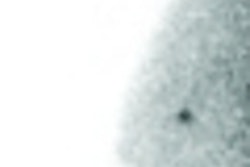A rare study comparing MRI and SPECT in patients with acute myocardial infarction has found good correlation between the two, with MRI proving more sensitive in detecting small inferior infarcts.
The new report is only the second published study of human patients that compares the accuracy of delayed enhancement (DE) MRI versus a nuclear imaging technique for estimating the size of acute infarcts.
Lead author Dr. Gunnar Lund, along with cardiology and radiology colleagues from the University Hospital Eppendorf in Hamburg, Germany, and the University of California, San Francisco, reported their findings in Radiology (July 2004, Vol. 232:1, pp. 49-57).
Currently, SPECT is widely used to estimate infarct size after reperfusion therapy and predict outcome based on infarct size, according to the authors.
In examinations of 60 reperfused patients, performed six days after their acute MIs, the researchers found good correlation and agreement between DE MRI and 201thallium SPECT in measurement of infarcts of various sizes.
Some earlier animal studies found that DE MRI overestimated the size of infarcts by 1%-40% of the left ventricular area. The authors of the latest study, in an earlier publication, also found overestimation when imaging was performed within the first 24 hours of reperfusion.
The improvement of size estimates in the latest study may also have been related to "the use of a variable inversion time for nulling the signal intensity of normal myocardium after contrast medium injection," the authors wrote.
Perhaps more important, the authors found DE MRI was more sensitive than 201thallium SPECT in demonstrating small inferior infarcts.
"Detection of small infarcts is important because patients with previous infarction are at a high risk for recurrent infarction and death," wrote the authors.
They noted that their findings on MRI versus SPECT for visualization of small infarcts had also been recently confirmed by other researchers (Lancet, February 1, 2003, Vol. 361:9355, pp. 374-379).
Finally, the authors found that the patients who turned out to have microvascular obstruction on first-pass enhancement (FPE) MRI were those with large infarcts -- greater than 20% of the left ventricular (LV) area -- on DE MRI or 201thallium SPECT.
"This infarct size is an important threshold, because results of animal studies have indicated that LV remodeling occurs if more than 20% of the myocardium is affected by infarction," wrote the authors. "Therefore, detection of microvascular obstruction and accurate sizing of myocardial infarction are good indicators for identifying patients who are at risk for LV remodeling."
Overall, they concluded, "Combined FPE and DE MR imaging may be useful for stratifying patients after acute myocardial infarction into a low-risk group with no microvascular obstruction and small infarcts, and a high-risk group with microvascular obstruction and large infarcts."
By Tracie L. ThompsonAuntMinnie.com staff writer
August 4, 2004
Related Reading
Perfusion defect patterns help spot stenoses in angina patients, March 29, 2004
Cine MR cuts acute myocardial infarction exam time, April 3, 2003
MRI better than SPECT for predicting myocardial viability soon after MI, February 19, 2003
Stress test with SPECT remains main modality for assessing myocardial viability, November 8, 2002
Copyright © 2004 AuntMinnie.com




















